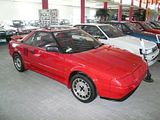

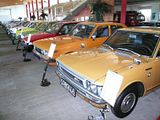
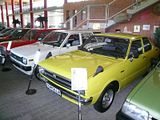
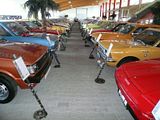
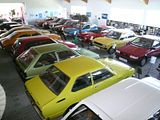

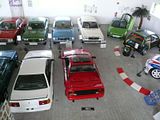 I have my friend in Munich, Christian Wimmer, to thank for alerting me to the existence of the German Toyota Museum. For a start, it is not the sort of theme that you would expect to find for a museum in a nation more famous for Porsche, Mercedes, BMW, Audi and countless now obsolete marques, and even though there is indeed a website for the museum, it is limited in the insight it gives you and you definitely need a certain level of determination to find the place. It is located in a tiny village about 20km south west of Passau, a town that is a mere stone’s throw from Austria and the Czech Republic, right in the very south eastern corner of Bavaria. Even when armed with the address of the museum, and helped by a couple of signs in neighbouring villages, the last little bit of the journey was hard, as the signs stop, the sat nat said that I had “arrived”, but then more by luck than judgment, on a side street off the so-called main road, I made one turn into the car park of a pub, and there, emblazened on the wall were the words “Toyota Museum”. Entrance is through the pub, and when I arrived at around 11am, I was clearly the first visitor of the day. The landlord went and unlocked the door, opened it and let me wander in. No-one disturbed me at all during my visit. It was only when I was almost out of the door, a while later. that he remembered he had not charged me an admission fee. It costs the grand total of €3.50 to see a sizeable collection of Toyotas, most of which are long since gone from our roads.
I have my friend in Munich, Christian Wimmer, to thank for alerting me to the existence of the German Toyota Museum. For a start, it is not the sort of theme that you would expect to find for a museum in a nation more famous for Porsche, Mercedes, BMW, Audi and countless now obsolete marques, and even though there is indeed a website for the museum, it is limited in the insight it gives you and you definitely need a certain level of determination to find the place. It is located in a tiny village about 20km south west of Passau, a town that is a mere stone’s throw from Austria and the Czech Republic, right in the very south eastern corner of Bavaria. Even when armed with the address of the museum, and helped by a couple of signs in neighbouring villages, the last little bit of the journey was hard, as the signs stop, the sat nat said that I had “arrived”, but then more by luck than judgment, on a side street off the so-called main road, I made one turn into the car park of a pub, and there, emblazened on the wall were the words “Toyota Museum”. Entrance is through the pub, and when I arrived at around 11am, I was clearly the first visitor of the day. The landlord went and unlocked the door, opened it and let me wander in. No-one disturbed me at all during my visit. It was only when I was almost out of the door, a while later. that he remembered he had not charged me an admission fee. It costs the grand total of €3.50 to see a sizeable collection of Toyotas, most of which are long since gone from our roads.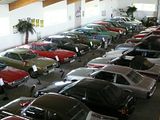

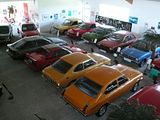
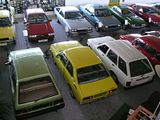
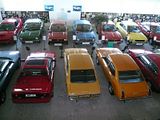 The cars are all owned by a gentleman called Peter Pichert, who owns the local Toyota dealership in Passau. Toyota did not arrive in Germany until 1971, some years after British sales started, and after a few years with this Japanese franchise, Pichert began to buy back some of the cars he had sold and serviced, and he stored them away. He now has what is probably a unique collection in Europe, comprising mainly cars from the 1970s and 1980s, all of which seem to be in excellent condition. The loft area of the museum was a treasure trove of engines, and all manner of spare parts, with everything from filters to skins stacked up. There is a restoration area in the museum, with a number of cars still in need of love and attention to bring them back to their former glory. Looking at Christian’s pictures from his visit almost exactly a year ago, it seems that nothing has moved at all in this area, and indeed the whole museum had barely changed, apart from the fact that he was lucky enough to see a Toyota 2000GT and I was not!
The cars are all owned by a gentleman called Peter Pichert, who owns the local Toyota dealership in Passau. Toyota did not arrive in Germany until 1971, some years after British sales started, and after a few years with this Japanese franchise, Pichert began to buy back some of the cars he had sold and serviced, and he stored them away. He now has what is probably a unique collection in Europe, comprising mainly cars from the 1970s and 1980s, all of which seem to be in excellent condition. The loft area of the museum was a treasure trove of engines, and all manner of spare parts, with everything from filters to skins stacked up. There is a restoration area in the museum, with a number of cars still in need of love and attention to bring them back to their former glory. Looking at Christian’s pictures from his visit almost exactly a year ago, it seems that nothing has moved at all in this area, and indeed the whole museum had barely changed, apart from the fact that he was lucky enough to see a Toyota 2000GT and I was not!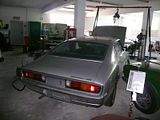

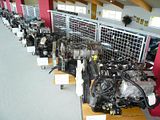 Corolla
CorollaGermany missed out on the first generation Corolla, as by the time that the first Toyotas went on sale in 1971, this long running name was onto its second iteration. A complex range of saloon, coupe and estate cars was offered.
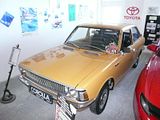
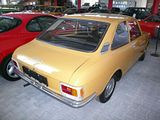


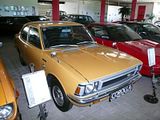
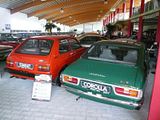
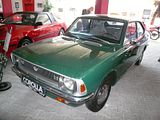 The third generation cars were launched in Japan in 1974, but took a long time to reach Europe, arriving in spring 1975. These utterly conventional saloons, coupes and estates were complemented by a more stylish liftback in 1977.
The third generation cars were launched in Japan in 1974, but took a long time to reach Europe, arriving in spring 1975. These utterly conventional saloons, coupes and estates were complemented by a more stylish liftback in 1977.
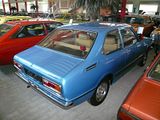
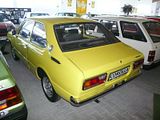
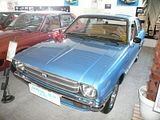

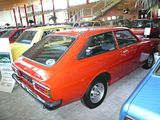
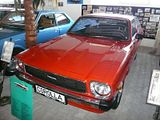
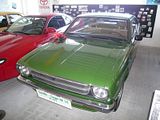 1980 saw a new, squared off style adopted, and once again there were saloon, coupe estate and liftback cars available
1980 saw a new, squared off style adopted, and once again there were saloon, coupe estate and liftback cars available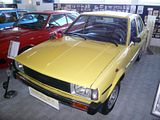 With the launch of yet another new range in 1983, finally Corolla adopted front wheel drive, for the saloon, liftback and estate models. Coupes retained rear wheel drive and quickly acquired a cult following that they have still not entirely lost. Indeed the forthcoming FT-86 Coupe is named in honour of these AE-86 cars.
With the launch of yet another new range in 1983, finally Corolla adopted front wheel drive, for the saloon, liftback and estate models. Coupes retained rear wheel drive and quickly acquired a cult following that they have still not entirely lost. Indeed the forthcoming FT-86 Coupe is named in honour of these AE-86 cars. 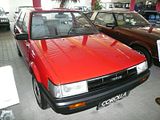
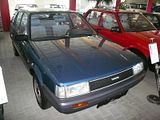
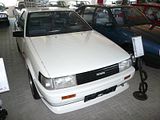
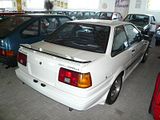
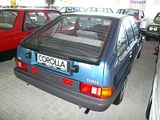
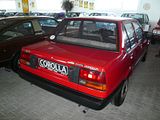
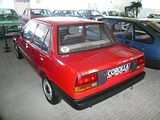
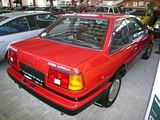

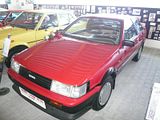 New Corollas kept coming, every few years. They remained largely worthy but dull, even though success as a rally car proved that they did have some merit. This is a replica of one of those cars driven by the legendary Carlos Sainz.
New Corollas kept coming, every few years. They remained largely worthy but dull, even though success as a rally car proved that they did have some merit. This is a replica of one of those cars driven by the legendary Carlos Sainz.  Corona
CoronaThis was the mainstream model in the range during the 1970s, aimed very much at the Ford Cortina and Vauxhall Victor. Like them, each generation got successively larger, and Toyota further confused matters by devising a second Corona range which ran concurrently with the first one, which they called Mark II. The cars came in saloon, estate and coupe guises.
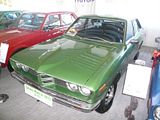
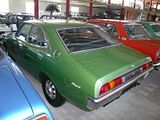

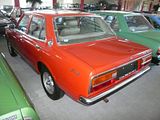 A new generation of Corona appeared in 1979. A much wider range of these cars was offered on the domestic market. The UK only saw the Liftback, but it would appear that Germany was also offered a saloon version.
A new generation of Corona appeared in 1979. A much wider range of these cars was offered on the domestic market. The UK only saw the Liftback, but it would appear that Germany was also offered a saloon version.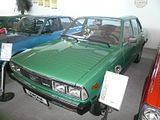

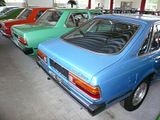
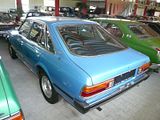 Celica
CelicaToyota’s riposte to the Ford Capri was launched in 1971, and received reasonable reviews, as it looked good, was well equipped and was decent to drive, even if it lacked the glamour and extensive range of models that Ford could supply. The first generation car stayed in production until 1978, during which time a mild facelift changed the frontal styling and a liftback version arrived that was more reminiscent of Mustang than Capri.

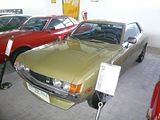



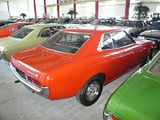
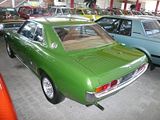
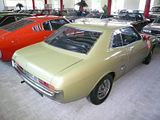
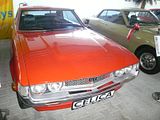

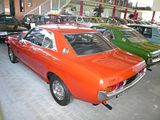
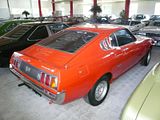
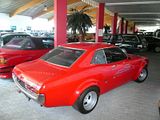
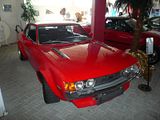
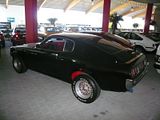 Second generation cars ran from 1978 to 1982, at the time when most Japanese models had a strict 4 year life cycle. Coupe and hatchback models were offered.
Second generation cars ran from 1978 to 1982, at the time when most Japanese models had a strict 4 year life cycle. Coupe and hatchback models were offered.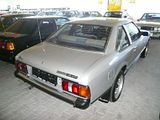
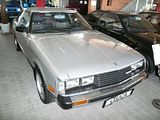
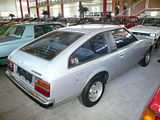
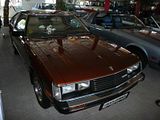
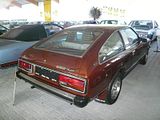
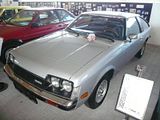 The third generation cars also had a 4 year production life, from 1982 to 1986.
The third generation cars also had a 4 year production life, from 1982 to 1986.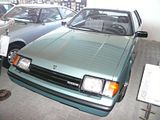
 The fourth Celica was widely praised when it appeared in early 1986, and this car went on to spawn the four wheel drive GT-4 car, which had both a successful rally career as well as being a desirable road car.
The fourth Celica was widely praised when it appeared in early 1986, and this car went on to spawn the four wheel drive GT-4 car, which had both a successful rally career as well as being a desirable road car.
 The fifth generation tried to build on this, but the rather American-ised styling did not appeal much in Europe and this car was widely seen as a step backwards from its predecessor.
The fifth generation tried to build on this, but the rather American-ised styling did not appeal much in Europe and this car was widely seen as a step backwards from its predecessor. Toyota took their time to offer their own convertible model, but this did not deter a number of specialist firms from creating their own, and there were examples of several of these cars in the museum.
Toyota took their time to offer their own convertible model, but this did not deter a number of specialist firms from creating their own, and there were examples of several of these cars in the museum.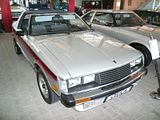
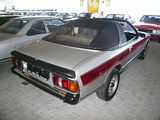
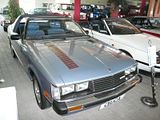
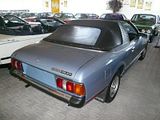
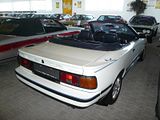
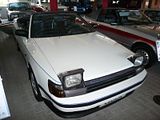
 Celica Supra
Celica SupraThe first Celica Supra cars were little more than a Celica Liftback with an extended wheelbase to create room to insert a V6 engine. Second generation cars had their own styling which, although, based on the regular Celica was distinctly different especially at the front of the vehicle. Of course, after this, it all changed – but there was no example of the 1990s Supra in sight.
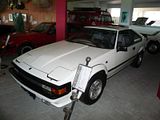
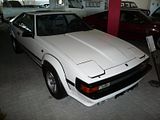
 1000/Publica
1000/PublicaThese cars were relatively short lived in Europe, as they were added to the range as an economy offering positioned below the Corolla in 1976, and were superceded by the Starlet in 1978. The saloon sold reasonably well, but the estate sold in tiny numbers. I wonder if there are any more of these cars left in Europe?

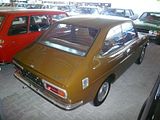
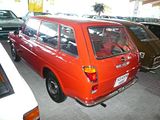
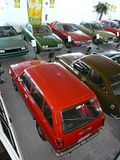
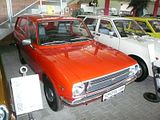 Carina
CarinaAs the Corona had become larger, so space opened up for a model to bridge the gap from Corolla to Corona and that car was the Carina, a conventional saloon which shared much with the more sporty Celica, much as Ford’s Cortina and Capri did things. This car never sold that well in the UK, even though it was probably just as capable as the other models in Toyota’s range at the time.
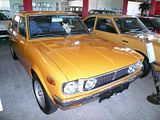
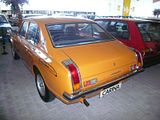
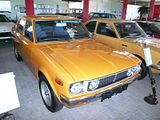
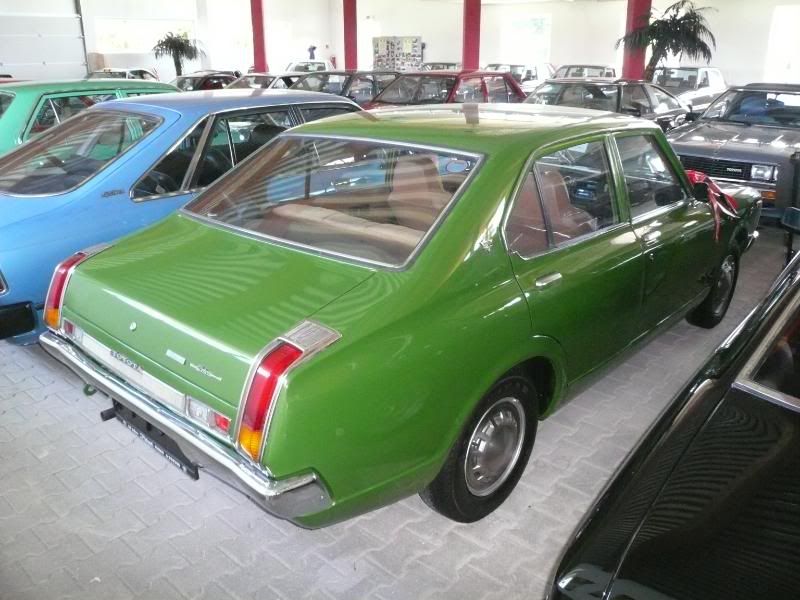
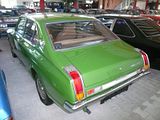 Crown
CrownThis was the luxury model in the Toyota range in the 1970s and 1908s. During the 1970s, the model was offered as a saloon, an estate which had the american-esque feature of a drop down tailgate with wind down window and a coupe.
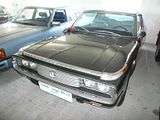
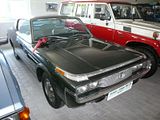 A new Crown was launched in 1980, and there were several of these cars parked up along side each other in the museum. These were slow selling cars when new, so to see quite so many all gathered together was quite a novelty.
A new Crown was launched in 1980, and there were several of these cars parked up along side each other in the museum. These were slow selling cars when new, so to see quite so many all gathered together was quite a novelty.
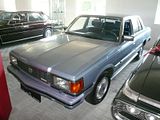
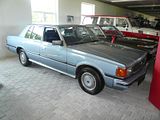
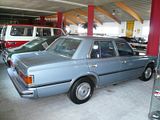
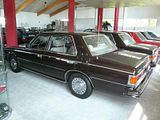

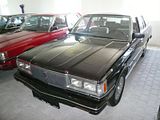
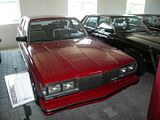 The estate version of this generation of the Crown never reached Britain, perhaps surprisingly, as the market for large estate cars was quite sizeable at the time.
The estate version of this generation of the Crown never reached Britain, perhaps surprisingly, as the market for large estate cars was quite sizeable at the time.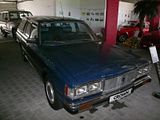
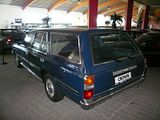 Cressida
CressidaA new name for 1977, when a replacement for the Corona Mark 2 range arrived. The UK never saw the coupe model that I found here, but we did get the saloon and estate cars. Positioned to compete with the Ford Granada, these cars sold on equipment and reliability, but were no match for the European models in terms of what they were like to drive.
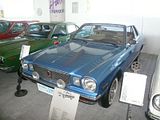
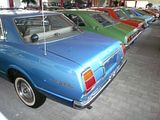
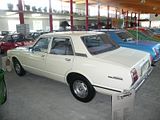 A second generation arrived in 1981 and struggled even more in the market place. The car was phased out when the front wheel drive Camry arrived in 1983.
A second generation arrived in 1981 and struggled even more in the market place. The car was phased out when the front wheel drive Camry arrived in 1983.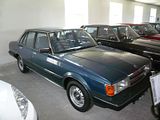
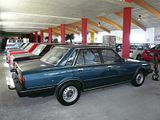 Tercel
Tercel With the Corolla selling so steadily, Toyota were unconvinced of the need to adopt the increasingly popular front wheel drive that had been taken up by most of their competitors during the 1970s. Finally, in 1979, they launched the Tercel, an Escort sized car, available as a saloon or a hatchback. The first generation cars were never sold in the UK.

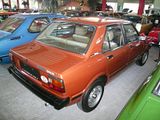 The second generation cars did reach Britain, at the start of 1983, a matter of months before the first front wheel drive Corolla. They retained a relevance, as these were hatchbacks and the longer running name car remained a saloon for a while longer. Subsequent development saw a four wheel drive estate model offered, to rival the increasingly popular Subaru. The museum has one of these awaiting restoration.
The second generation cars did reach Britain, at the start of 1983, a matter of months before the first front wheel drive Corolla. They retained a relevance, as these were hatchbacks and the longer running name car remained a saloon for a while longer. Subsequent development saw a four wheel drive estate model offered, to rival the increasingly popular Subaru. The museum has one of these awaiting restoration. 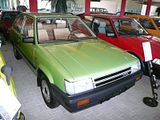
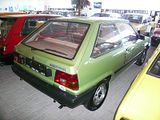 Starlet
StarletToyota were among the last large manufacturers to introduce a “supermini” into their range, complete with hatchback design, and when they finally did so with the 1978, there was more than a little surprise that the car came with rear wheel drive. This was no deterrent to sales, as the car was well finished, good value for money and proved to be utterly reliable. It was a common sight on our roads, in both three and five door form. The estate version never came to Britain, so I would guess that this could be the first such car I have ever seen in the metal.
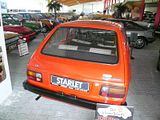
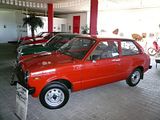
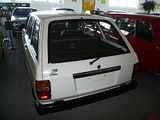
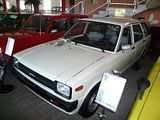
 Land Cruiser
Land CruiserIt was only late in the 1970s when Toyota first brought their Land-Rover rivalling product to Europe, with two very different cars: one more Jeep like, and the other a sort of cut-price Range-Rover.
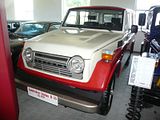

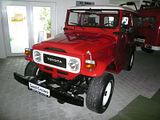 In 1982, a new model appeared, just as the market for what we now think of as SUVs started to burgeon.
In 1982, a new model appeared, just as the market for what we now think of as SUVs started to burgeon.
 SpaceCruiser/Model F
SpaceCruiser/Model FBased on the Hi-Ace van, this was an early attempt at a people carrier. Despite the mid engine, the handling characteristics of this admittedly very roomy vehicle were more than a little alarming. It was replaced by the purpose designed Previa, which was very popular with families for years until Toyota simply abandoned this market sector in Europe. The number of grey import Lucida Estimas on the roads even now do make one question the wisdom of that decision.
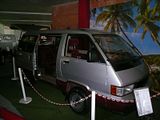
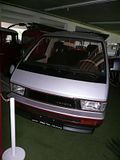 MR2
MR2Much has been written about the MR2 over the years, with widespread agreement that in many ways the first of the three model types was the best. This car appears so diminutive now!

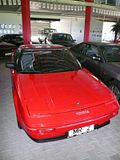
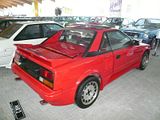 Sera
SeraNever officially imported to Europe, a number of these novel coupes have made their way here as grey imports.
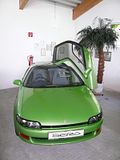
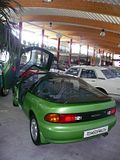 Prius
PriusNo exhibition of Toyota is perhaps complete without an example of the Prius. Love them or hate them, it cannot be denied that this car has had huge impact and influence on the global car market since the launch of the first model back in 1997. This car was imported to Germany for use by Toyota to demonstrate its innovative technology, rather than to sell to an end customer.
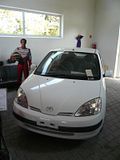
 Although many might, quite legitimately, decry Toyota as one of the marques that is less interesting to the auto enthusiast, and based on many of their recent offerings, I would struggle to disagree with them, I found this museum fascinating. There is a real slice of automotive history, showing how this Japanese marque went from offering cars that were designed for the local market, through styling that was clearly aimed more at American tastes, and then how the very conservative engineering transformed as front wheel drive was widely adopted, before some cars with real panache, such as the first MR2 and the AE86 Corolla GT arrived in the range. Whilst I would not necessarily recommend a trip just to see this museum, if you are in the area – and Bavaria is a lovely area to be in, as I am finding out now I have spent a bit of time there – them it is definitely worth setting the sat nav to find the village of Hartkirchen, near Pocking, not far from Passau.
Although many might, quite legitimately, decry Toyota as one of the marques that is less interesting to the auto enthusiast, and based on many of their recent offerings, I would struggle to disagree with them, I found this museum fascinating. There is a real slice of automotive history, showing how this Japanese marque went from offering cars that were designed for the local market, through styling that was clearly aimed more at American tastes, and then how the very conservative engineering transformed as front wheel drive was widely adopted, before some cars with real panache, such as the first MR2 and the AE86 Corolla GT arrived in the range. Whilst I would not necessarily recommend a trip just to see this museum, if you are in the area – and Bavaria is a lovely area to be in, as I am finding out now I have spent a bit of time there – them it is definitely worth setting the sat nav to find the village of Hartkirchen, near Pocking, not far from Passau.2011-05-26 20:10:35
















































































































































































































































































